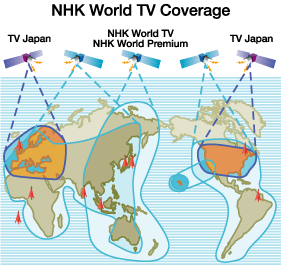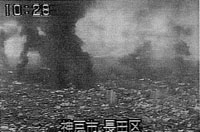
| The late 1990's brought major change in the media environment with the phenomenal spread of the Internet and mobile data terminals. The start of U.S. Major League Baseball telecasts in 1995 was a major event that heralded the arrival of a new era for the media. |
Lifeline in an emergency: protecting lives and property |
|
The Great Hanshin-Awaji Earthquake These broadcasts helped to minimize people's confusion and anxiety as they came to terms with the shocking physical damage caused by the quake. Four weeks after the event, NHK conducted a survey among the victims. It showed that broadcasting had played an important role in helping people "feel the need for mutual help," "know that relief was being offered nationwide," and "know their situation from accurate information presented on TV and radio, and in the newspapers." |
Among the respondents, 46% said that TV was the most useful medium (31% of all respondents selecting NHK, and 15% commercial broadcasters). The figures were 34% for newspapers and 14% for radio (half selecting NHK, and half commercial broadcasters). TV had demonstrated its role as a lifeline in a time of emergency. The Nomo effect
|
In 1995, NHK introduced an international TV service with two major objectives. One was to provide information to help protect the lives and property of Japanese around the world, including the 18 million who travel internationally each year and the 780,000 or so who live abroad. The other aim was to present up-to-date information about Japan and the world so as to promote international understanding. Since 1998, there has been a steady shift to digital technology, with three satellite links now enabling the NHK service to be aired in nearly every corner of the globe. |
 |

